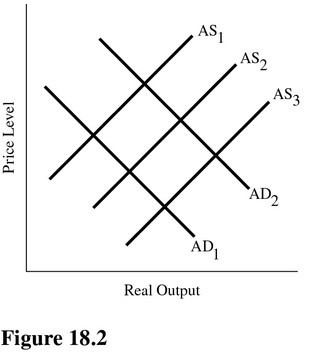The marginal propensity to consume is
a. disposable income divided by consumption.
b. the change in consumption divided by the change in disposable income.
c. consumption divided by disposable income.
d. the change in disposable income divided by the change in consumption.
b
You might also like to view...
In the above figure, if the economy is initially at an equilibrium output at point A and the interest rate is r1, then an open market purchase of bonds by the Fed will
A) not have any impact on short- or long-run equilibrium real Gross Domestic Product (GDP). B) cause interest rates to decline to r2, investment to decline, and aggregate demand to shift inward to the left. C) cause interest rates to increase and output to decline. D) cause interest rates to decline to r2, investment to increase to I2, and the AD curve to shift upward to the right.
If the elasticity of supply for a good is greater than the government expected: a. Consumers will bear more of the burden of the tax than the government expected. b. Producers will bear more of the burden of the tax than the government expected. c. The tax will raise less revenue than the government expected
d. Both a. and c. are true.
Which of the following terms describes how a good is produced in stages?
a. supply chain b. value chain c. supply trade d. value trade
 Refer to Figure 18.2. The sale of bonds by the Fed in the open market will result in
Refer to Figure 18.2. The sale of bonds by the Fed in the open market will result in
A. An increase in the money supply and a move from AS1 to AS2. B. A decrease in the money supply and a move from AD2 to AD1. C. An increase in the money supply and a move from AD1 to AD2. D. A decrease in the money supply and a move from AS2 to AS1.